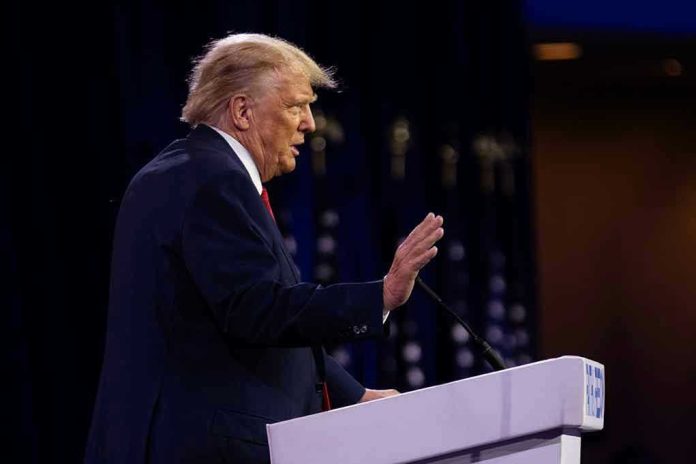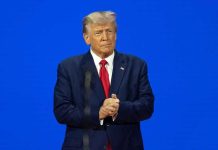
What if the next chapter in American politics involves a president taking decisive action against far-left extremist networks?
Story Snapshot
- Trump’s strategies to dismantle far-left networks if re-elected.
- Impact on civil liberties and political polarization.
- Comparison with previous approaches to domestic extremism.
- Potential consequences for law enforcement and national security.
Trump’s Strategic Approach
Donald Trump’s focus on dismantling far-left extremist networks, is a topic of intense debate. These groups, often associated with anti-fascist movements, have historically been less scrutinized at the federal level compared to far-right extremism. Trump’s potential policies would likely involve increased surveillance, intelligence operations, and possibly new legislation aimed at identifying and prosecuting these groups. However, such actions could spark significant controversy over civil liberties and the potential for government overreach.
Trump’s proposals reflect his administration’s previous stance between 2016 and 2020, where the focus was primarily on Islamic and right-wing extremism. The surge in protests following George Floyd’s murder in 2020 shifted some attention to far-left groups, but the Biden administration pivoted back to addressing right-wing threats. Trump has emphasized the dismantling of networks like Antifa, which he has labeled as domestic terrorists in his recently signed executive order.
Legal and Political Challenges
Targeting far-left groups presents substantial legal and political challenges. Many of these networks operate without a centralized structure, complicating efforts to prosecute individuals under terrorism charges. Moreover, legal experts caution that broad crackdowns could infringe on First Amendment rights, potentially driving extremist activities further underground. The balance between national security and civil liberties remains a contentious issue, with civil liberties organizations poised to challenge any perceived overreach in court.
Political polarization further complicates this landscape. Trump’s focus on far-left extremism could deepen partisan divides, as supporters and opponents of his approach clash over the legitimacy and necessity of such measures. Media coverage and public discourse will play crucial roles in shaping perceptions and influencing policy decisions.
Potential Implications for Law Enforcement
Implementing a crackdown on far-left networks would require significant resources from federal and local law enforcement agencies. These efforts could strain existing capabilities, as agencies already grapple with a complex threat environment involving both far-left and far-right actors. The decentralized nature of far-left groups poses additional challenges, making infiltration and intelligence gathering difficult.
Law enforcement agencies must also navigate the reputational risks associated with targeting protest movements. A heavy-handed approach could alienate communities and erode public trust, particularly if actions are perceived as politically motivated. Ensuring transparency and accountability will be vital to maintaining legitimacy and avoiding further polarization.
Impact on Civil Liberties and Society
Trump’s proposed crackdown could have significant implications for civil liberties and American society. Increased scrutiny of protest movements may deter legitimate dissent, chilling free speech and assembly. Minority communities, often at the forefront of activism, could face heightened surveillance and policing, exacerbating existing tensions with law enforcement.
Economically, these efforts could lead to increased legal costs and resource allocation for surveillance and prosecution. Socially, the potential for increased polarization looms large, as actions against far-left networks could galvanize both supporters and detractors of Trump’s approach.
Sources:
U.S. Department of Homeland Security, Homeland Threat Assessment 2025
George Washington University, Domestic Extremism






